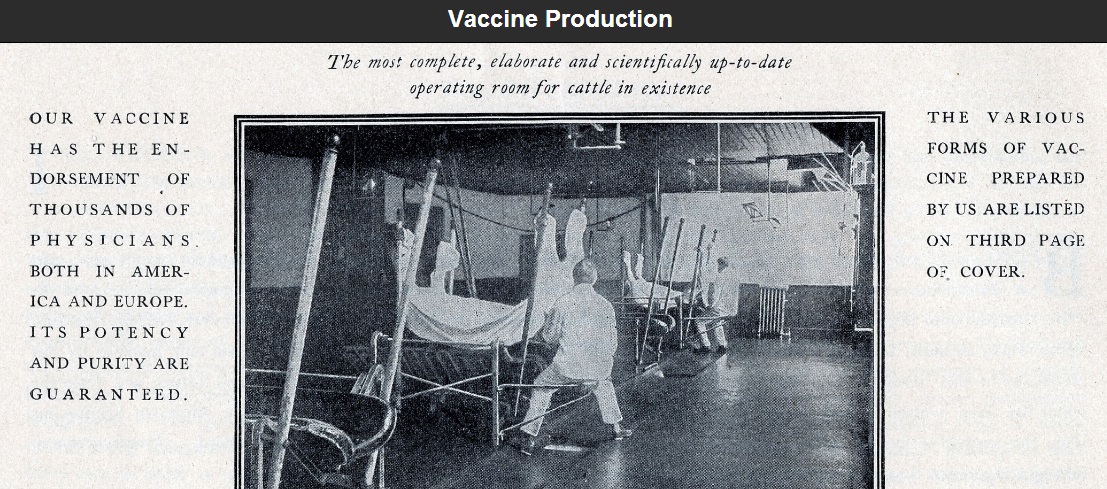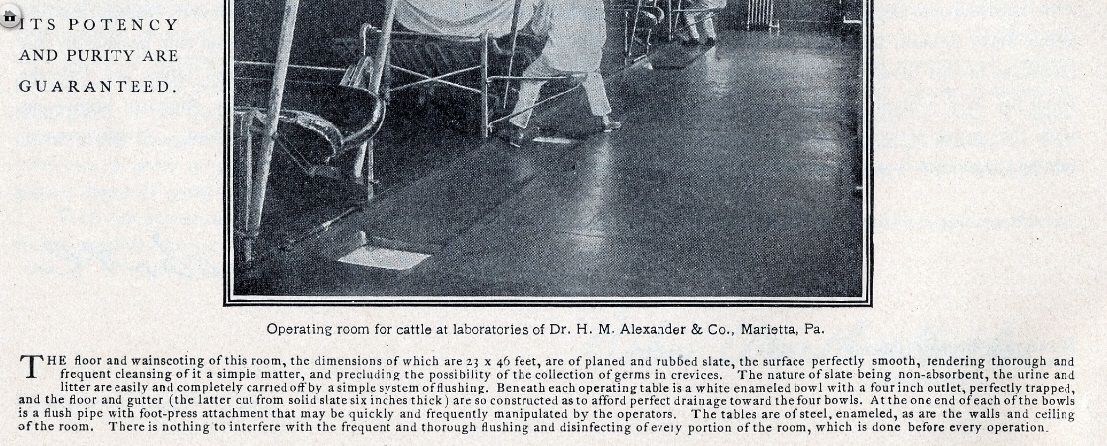

Glycerine
[back] Vaccine
Ingredients
[back] Vaccine 'Lymph'
Smallpox
quotes Smallpox
[Used as 'germ killer' in smallpox vaccines!]
Crude calf or animal "lymph" has been denounced by many eminent medical authorities and medical journals. One of the objections to animal vaccine was that the " lymph" required "storing," and was liable to infection by extraneous germs, whereas the arm-to-arm system maintained a fresh supply. To meet this difficulty, glycerine has been added as a preservative, and it is also said to possess other benign qualities. So "diluted lymph" has become the fashion —"pure glycerinated calf lymph." [Extract from 1912 book] LEICESTER: SANITATION versus VACCINATION BY J.T. BIGGS J.P.
How " Glycerinated Calf Lymph " is "Manufactured."
The so-called " humanized lymph," which was obligatory for nearly eighty years, had finally to be condemned, and, since 1898, " calf lymph which no Public Vaccinator had previously been allowed to use, has replaced arm-to-arm vaccination." A feature of the calf lymph was the addition of glycerine (see Appendix II) with a view to increase the quantity and to destroy all extraneous germs of disease. Then it was found that glycerine is itself a nutritive medium for the growth of putrefactive and other germs. " I have heard of dilutions of lymph with glycerine," wrote a Chief Medical Officer of the Local Government Board,1 " It will, I trust, be long before such preposterous adulterations of vaccine give the opportunity of investigating their results in English practices." The primary source of calf-lymph was disclosed in a lecture at Owens College, by Dr. S. Monckton Copeman,2 who stated that small-pox material was obtained from living patients and also from the corpses of those who had died from small-pox. This matter —after being passed through the bodies of monkeys and calves—was used to " vaccinate " a number of children. [1933] The Golden Calf by Charles W. Forward
English physician S. Monkton Copeman showed that adding glycerin to lymph acts
as a germicide. As glycerin came to be widely used, it reduced transmission of
harmful microbes via the lymph. This photograph from a brochure shows the cattle
operating room at Dr. H.M. Alexander's vaccine farm, outside Philadelphia.
http://www.historyofvaccines.org/content/vaccine-production

